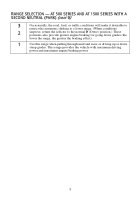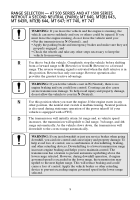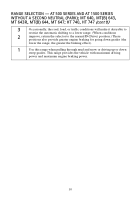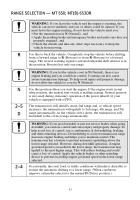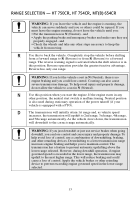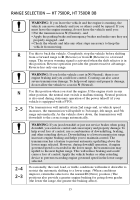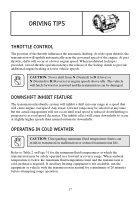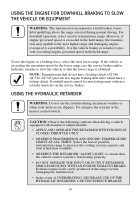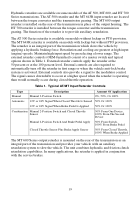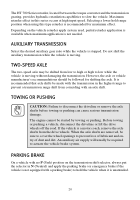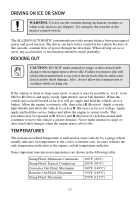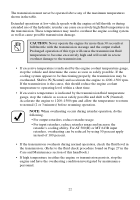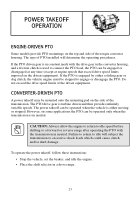ALLISON-OM1334EN - Page 23 of 48
18
USING THE ENGINE FOR DOWNHILL BRAKING TO SLOW
THE VEHICLE OR EQUIPMENT
To use the engine as a braking force, select the next lower range. If the vehicle is
exceeding the maximum speed for the lower range, use the service brakes and/or
hydraulic retarder to slow the vehicle so that the lower range is obtained.
USING THE HYDRAULIC RETARDER
WARNING:
The transmission incorporates a hold feature to pro-
hibit upshifting above the range selected during normal driving. For
downhill operation, select a lower transmission range. However, if
engine governed speed is exceeded in the held range, the transmis-
sion may upshift to the next higher range and damaging engine
overspeed is a possibility. Use the vehicle brakes or retarder to pre-
vent exceeding engine governed speed in the held range.
NOTE:
Transmissions that do not have a lockup clutch (AT 540,
AT 542, AT 545) provide less engine braking than units which have a
lockup clutch. Downhill speed control for non-lockup units without a
retarder must rely on the service brakes.
WARNING:
Do not use the retarder during inclement weather or
when road surfaces are slippery. De-energize the retarder at the
master control switch.
CAUTION:
Observe the following cautions when driving a vehicle
equipped with an input or output retarder:
• APPLY AND OPERATE THE RETARDER WITH ENGINE AT
CLOSED THROTTLE ONLY.
• OBSERVE TRANSMISSION AND ENGINE TEMPERATURE
LIMITS AT ALL TIMES. Select the lowest possible
transmission range to increase the cooling system capacity and
total retardation available.
• OBSERVE THE RETARDER “ALERT LIGHT” to ensure that
the vehicle control system is functioning properly.
• DO NOT OPERATE THE INPUT OR OUTPUT RETARDER
SIMULTANEOUSLY WITH AN ENGINE EXHAUST BRAKE.
Extreme torque loads can be produced in the range section,
damaging the transmission.
• In the event of OVERHEATING, DECREASE USE OF THE
HYDRAULIC RETARDER; USE THE SERVICE BRAKES.
Back to Top

